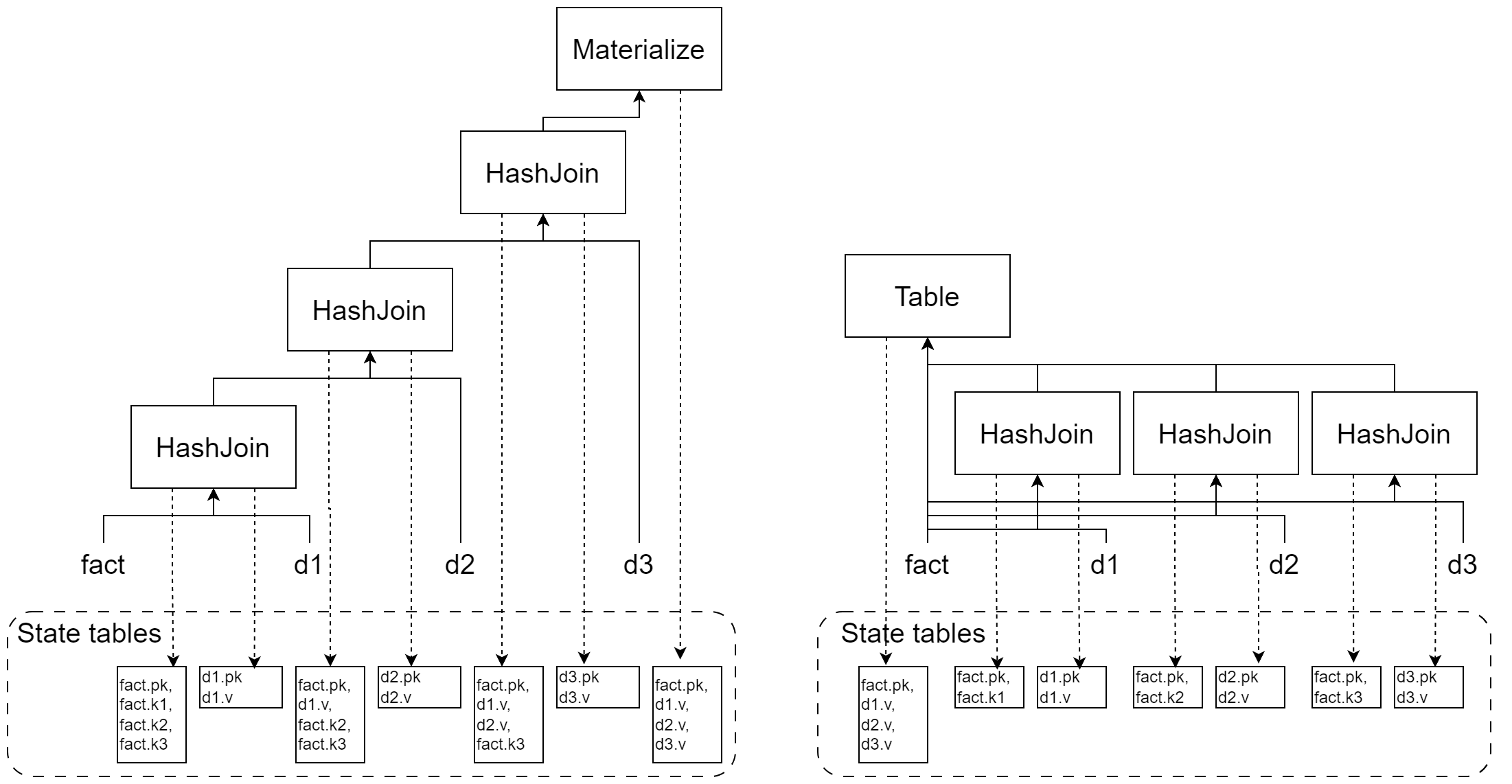In some cases with limitation, use the CREATE SINK INTO TABLE and ON CONFLICT clause can save the resources and achieve high efficiency.
Merge multiple sinks with the same primary key
CREATE TABLE d1(v1 int, k int primary key);
CREATE TABLE d2(v2 int, k int primary key);
CREATE TABLE d3(v3 int, k int primary key);
CREATE TABLE wide_d(v1 int, v2 int, v3 int, k int primary key)
ON CONFLICT DO UPDATE IF NOT NULL;
CREATE SINK sink1 INTO wide_d (v1, k) AS
SELECT v1, k FROM d1
with (
type = 'append-only',
force_append_only = 'true',
);
CREATE SINK sink2 INTO wide_d (v2, k) AS
SELECT v2, k FROM d2
with (
type = 'append-only',
force_append_only = 'true',
);
CREATE SINK sink3 INTO wide_d (v3,k) AS
SELECT v3, k FROM d3
with (
type = 'append-only',
force_append_only = 'true',
);
Keep in mind that the ON CONFLICT clause does not affect the update or delete events, the sinks should be forced to be append-only. Otherwise, the delete or update events from any sink will delete the regarding row.
Enrich data with foreign keys in Star/Snowflake schema model
With star schema, the data is constructed with a central fact table surrounded by several related dimension tables. Each dimension table is joined to the fact table through a foreign key relationship. Given that the join key is the primary key of the dimension tables, we can rewrite the query as a series of sink into table.
CREATE TABLE fact(pk int primary key, k1 int, k2 int, k3 int);
CREATE TABLE d1(pk int primary key, v int);
CREATE TABLE d2(pk int primary key, v int);
CREATE TABLE d3(pk int primary key, v int);
CREATE TABLE wide_fact(pk int primary key, v1 int, v2 int, v3 int)
ON CONFLICT DO UPDATE IF NOT NULL;
/* the main sink is not force-append-only to control if the record exists*/
CREATE SINK fact_sink INTO wide_fact (pk) AS
SELECT pk FROM fact;
CREATE SINK sink1 INTO wide_fact (pk, v1) AS
SELECT fact.pk, d1.v
FROM fact JOIN d1 ON fact.k1 = d1.pk
with (
type = 'append-only',
force_append_only = 'true',
);
CREATE SINK sink2 INTO wide_fact (pk, v2) AS
SELECT fact.pk, d2.v
FROM fact JOIN d2 ON fact.k2 = d2.pk
with (
type = 'append-only',
force_append_only = 'true',
);
CREATE SINK sink3 INTO wide_fact (pk, v3) AS
SELECT fact.pk, d3.v
FROM fact JOIN d3 ON fact.k3 = d3.pk
with (
type = 'append-only',
force_append_only = 'true',
);
CREATE MATERIALIZED VIEW wide_fact AS
SELECT fact.pk, d1.v v1, d2.v v2, d3.v v3
FROM fact
LEFT JOIN d1 ON fact.k1 = d1.pk
LEFT JOIN d2 ON fact.k2 = d2.pk
LEFT JOIN d3 ON fact.k3 = d3.pk
